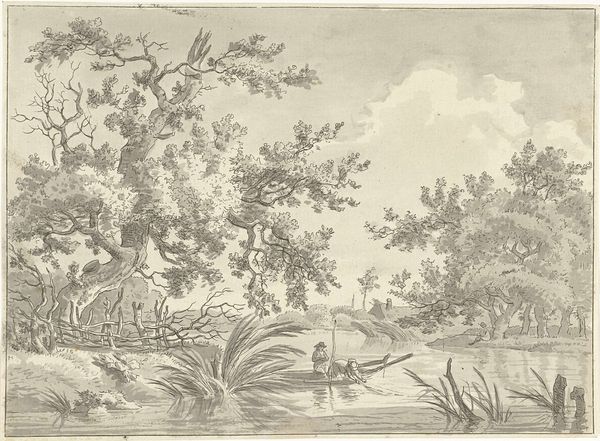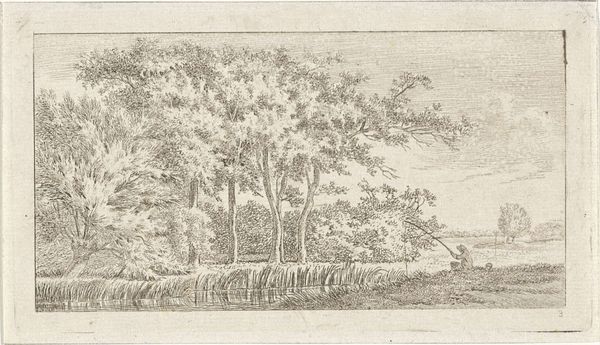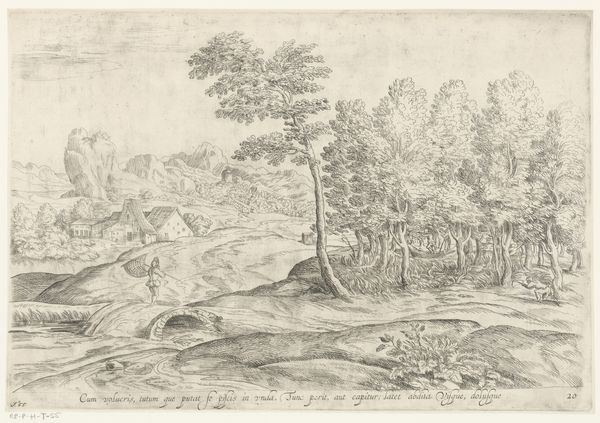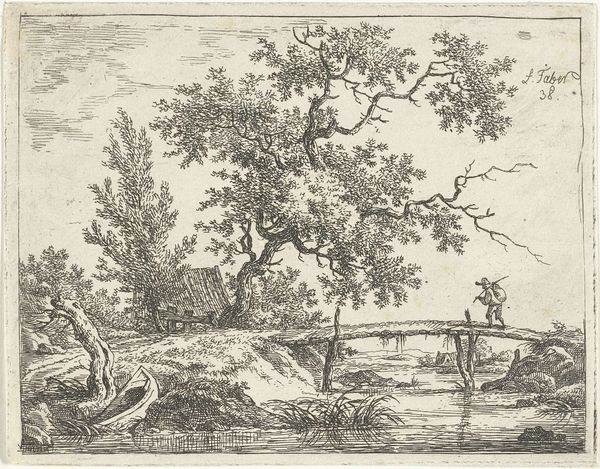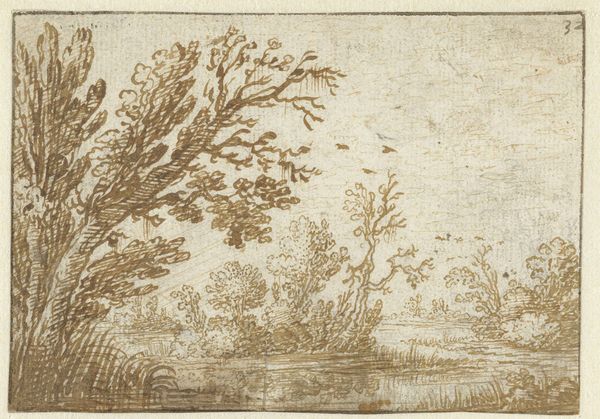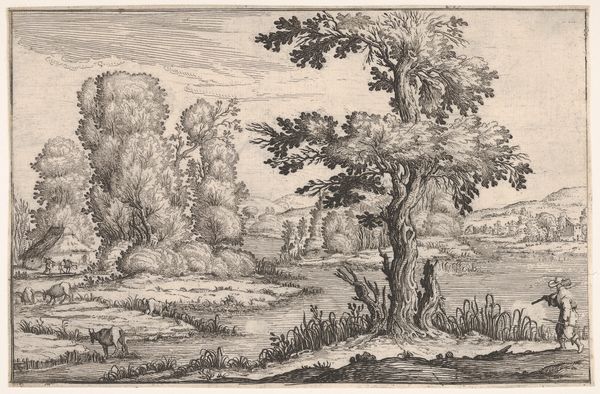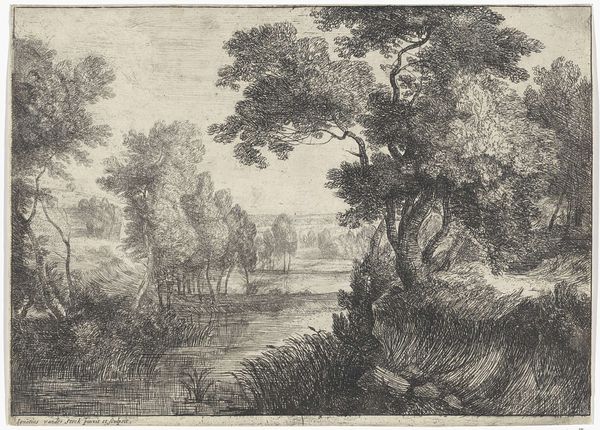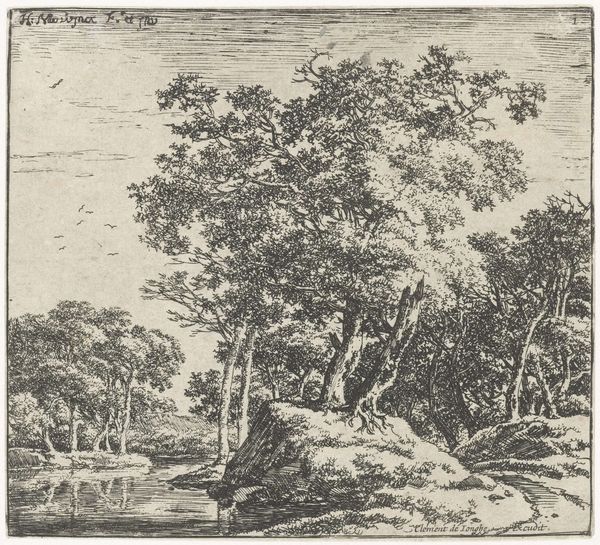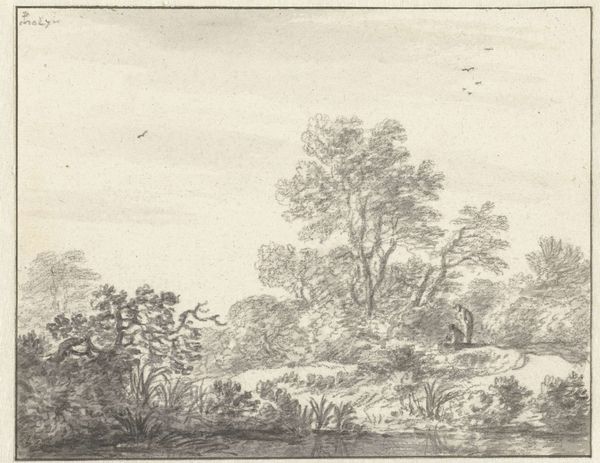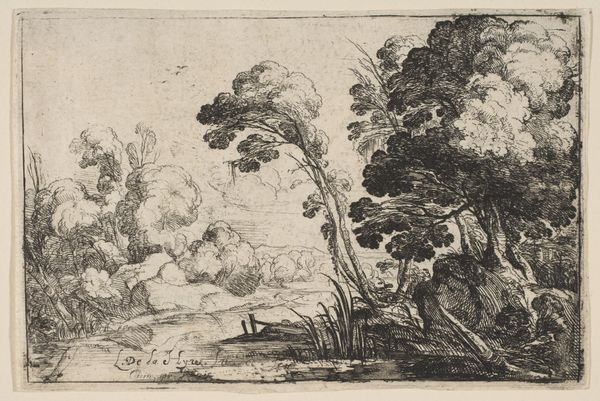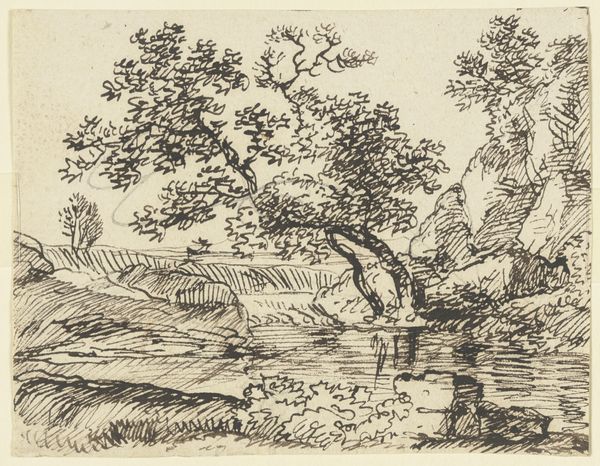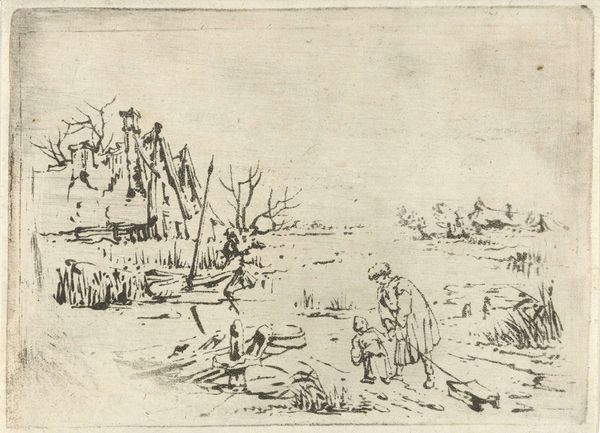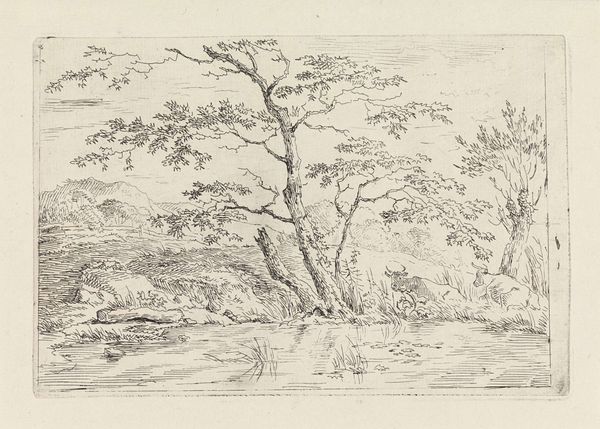
drawing, etching, ink
#
landscape illustration sketch
#
drawing
#
pen drawing
#
pen illustration
#
pen sketch
#
etching
#
landscape
#
personal sketchbook
#
ink
#
ink drawing experimentation
#
romanticism
#
pen-ink sketch
#
pen work
#
sketchbook drawing
#
genre-painting
#
sketchbook art
Dimensions: height 150 mm, width 203 mm
Copyright: Rijks Museum: Open Domain
Curator: This is Hermanus Fock’s “Landschap met twee vissers,” dating roughly from 1781 to 1822. The artwork employs pen, ink, and etching on paper, and it’s currently held here at the Rijksmuseum. Editor: It's interesting how the monochromatic palette almost drains the scene of life, despite it depicting figures engaged in the activity of fishing. There’s a deliberate dampening of vibrancy here. Curator: Right, the etching and ink techniques suggest that Fock wasn’t just after a visual record, but was thinking about production costs and broader consumption; printed images allowed for distribution beyond a wealthy elite. The textures achieved through etching offered a particular aesthetic tied to the medium’s capabilities. Editor: The composition, for me, is all about the layering of tones and the skeletal branches against that empty sky. See how the light plays, or doesn’t, across the water’s surface? It feels muted, almost ghostly. The stark lines define the essence of each form without ornamentation. Curator: And note that the fishing depicted isn't idealized labor; this isn't some grand pastoral scene. These are ordinary people engaged in a practical means of survival, subtly questioning high art's obsession with romanticized rural life. It is just a scene that may appear from reality. Editor: But the rendering style lifts the scene beyond pure representation. The artist employs specific compositional choices that seem like the picturesque mode – framing, recessive planes, the textural foreground that draw the eye into a sort of reverie. Even in these muted tones there's attention to atmosphere over plain observation. Curator: Well, consider the materials, readily accessible and relatively inexpensive at the time. The etching process also invites replication and dissemination on a wider scale, potentially democratizing art viewership beyond aristocratic circles. We have to consider the economic dimensions as a kind of content here. Editor: The focus is decidedly not on lavish, attention-grabbing artifice. It evokes the inherent subtleties present even in the barest scenes—a somber and simplified mood. Curator: Seeing Fock's work through both our lenses allows us to appreciate the detailed skill in execution and the complex layers of its creation and its relationship to society and class. Editor: Precisely! It’s those subtle modulations—in ink, in theme, in mood—that, through scrutiny, unlock this rather deceptively simple drawing.
Comments
No comments
Be the first to comment and join the conversation on the ultimate creative platform.
